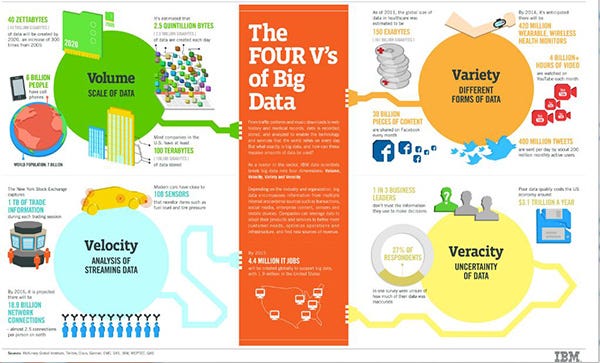Big Data’s Role in the Waste and Recycling Industry
Big Data, the act of gathering and storing large amounts of information for analysis, has been present in industries like education, banking, government, retail and healthcare since the early 2000s. And now it’s making its way into the waste and recycling industry.
With Big Data, members of the waste and recycling industry can optimize their routes based on historical waste and recycling data collection, which helps reduce emissions by having less trucks on the road, increase the efficiency of collection operations and drive better operational performance.
“Within the waste sector, Big Data is in the early stages,” says David Post, executive manager for Global Smarter Cities and enterprise Smarter Cities leader. “There is more innovation going on in the collection and route optimization side of things. In the future, the industry could use this data to improve things like resource planning, the efficiency of capital expenditures or to systematically have improvements in recycling rates.”
But in order to make Big Data a valuable tool, members of the industry have to become acquainted with the concept of Big Data and how it can be used.
There are four Vs in Big Data: volume, velocity, variety and veracity. These Vs were articulated by industry analyst Doug Laney around the time that Big Data was conceived into the world. Here’s a quick breakdown of how those Vs are defined:
Volume: The data that companies collect from various sources. The more historical data that you collect, the more insight you can extract to make better business decisions.
Velocity: The speed that data streams in at. The faster the speed, the faster you can process information into your data and analytics platform to help you create timely and accurate reports.
Variety: The data demographics. The more varied customer data you have, the more you’ll learn about the customers and their needs.
Veracity: The dependability and the different levels of frequency in which data is collected. Data must be consolidated, clean, consistent and current in order to determine the right business decisions.

Sextant LLC Founder and CEO Larry Daniel has identified “value” as a fifth V that he feels is just as important as the rest.
“It’s not only an IT consideration,” says Daniel. “It’s about business propositions and what an enterprise can represent in terms of value to both the marketplace and the community it’s serving. It’s powerful enough to reset assumptions about how we interact across the supply chain and alter organizations’ overarching business strategy.”
While these Vs help digest the many aspects of Big Data, there are a number of common misconceptions about it. Many companies feel that it’s complex, abstract and hard to manage, for example.
“A lot of organizations think about everything at once instead of picking one thing to start off with,” says Post. “My recommendation would be to pick a couple of areas to focus on and master them to develop those core competencies that will help you scale up into different areas. Technology tends to be the easier part for most people, but it’s about how you integrate the technology into your way of doing business that many organizations struggle with.”
The waste and recycling industry is very competitive, which makes it easy for companies to find what’s vogue in the industry and run with it.
“Big Data is only going to propagate and force a new layer of competitiveness. Companies would be wise not to mistake Big Data as a fad or as a one-time project requirement—it is much more than a momentary tool to improve yesterday’s operation; it is a tool to set oneself up for stronger operations tomorrow with opportunities for compound returns,” says Daniel. “When considering Big Data, firms might be prone to see limited benefit and overemphasize transition costs if they focus on data and analytics only for their value in the moment. Looking downstream, though, and considering how Big Data platforms might contribute to where you desire to be in a couple of years, it is much easier to recognize how Big Data and analytics translate to new assets, instead of long-term liabilities.”
Another trending topic in the Big Data conversation is the Internet of Things (IoT), which is a network of physical objects embedded with electronics, software, sensors and network connectivity to collect and exchange data. IoT is slowly making its way over to the waste and recycling sector because companies want to drive instruments into their business to gain better outcomes in various areas, such as collection and route optimization.
“IoT is a subset of Big Data,” says Post. “Smarter Cities has been using this approach to improve in areas like water and transportation systems. The easy part is collecting the data, and the most difficult part is putting it together in a format that you can make sense of and figuring out how to align it effectively with your operational business practices to provide better outcomes.”
The IoT concept will help the industry control and understand things in a way that hasn’t previously been possible.
“We sometimes speak as though we are in the middle of a Big Data wave, but truly we are just starting on this voyage,” says Daniel. “Industry is just beginning to benefit from machine learning, from IoT, from marketing technology and other big data-related endeavors. There are some important opportunities because the Big Data field is just now coming of age—the technology and practices are ripe, but the applications are far from complete.”
To learn more about Big Data trends in the waste and recycling space, join David Post of Smarter Cities and Larry Daniel of Sextant LLC at the Big Data Collection Trends - Is It Working? session at WasteExpo on June 6, 2016.
About the Author
You May Also Like




